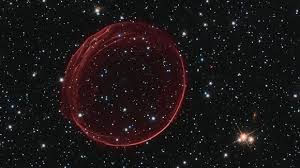EXPLORING NEW SCALES OF FUNDAMENTAL PHYSICS
- planck
- Aug 6
- 5 min read
The Universe we inhabit is full of fascinating and "exotic" objects and phenomena. Some, such as black holes and quantum entanglement, have already been discovered and studied; others, such as magnetic monopoles, cosmic strings, instantons, and proton decay, are fairly reliable predictions of our physical theories and await experimental detection. Finally, others, such as wormholes, hidden dimensions, and fuzzy balls, are more speculative objects or phenomena but nonetheless improbable. In this article, we will focus on two phenomena whose existence can be considered highly probable: cosmic strings and proton decay. We will also see how, with new experiments that will begin shortly, we could combine signals from the most remote corners of the Universe with signals from the Earth's subsurface to study new energy scales and new fundamental physical phenomena.
The Unification of the fundamental forces
In our low-energy Universe, we observe four fundamental forces: electromagnetism, gravity, the weak nuclear force, and the strong nuclear force. If we increase the energy to 246 GeV, we observe something tremendously surprising: the electromagnetic force and the weak force are unified! These two "fundamental" forces are unified into a single force called the electroweak force. It seems natural to ask: If we continue increasing the energy, will the other fundamental forces be unified?
The Standard Model (SM) contains all our knowledge of particle physics. The SM is characterized by three gauge symmetry groups: SU(3) representing the strong force, SU(2) representing the weak force, and U(1) representing electromagnetism. At energies above 246 GeV the electroweak force is represented by the SU(2)XU(1) group. With decreasing energy, the symmetry of the electroweak group undergoes spontaneous breaking via the Higgs mechanism.
causes the SU(2)XU(1) symmetry to be broken at SU(2) and U(1) producing the two different forces we see at low energy.
The question that immediately arises is: are there new gauge groups larger than those of the SM that represent the unification of the 3 fundamental forces at high energy?
The stability of the proton
It is estimated that our body has about 10exp28 protons. If this particle were unstable and decayed above a certain rate, then we could not exist: the radiation would kill us. This places the lower bound on a hypothetical proton half-life at more than a trillion years (about 100 times the lifetime of the Universe). That is, if the proton had a half-life of less than a trillion years, we would not exist.
The proton is found at the nucleus (literally) of all matter in the Universe: all known matter is made up of protons, neutrons, and electrons. In particle physics, there is a law called conservation of baryon number, which tells us that the number of baryons (quarks) must be conserved. The proton is composed of quarks and is therefore the most stable light composite particle: the permitted chain of decays ends in the proton. The proton cannot decay into lighter particles, since its decay would violate the conservation of baryon number. But what would happen if new symmetries existed, and therefore new particles beyond the known ones? Grand Unification Theories (GUTs) predict the existence of groups higher than those of the Standard Model of particle physics. These groups are, primarily, the SU(5) group and the SO(10) group. These groups would only exist at very high energies, once the energy of the Universe drops below a critical energy (the GUT energy) these groups break up generating the groups that we "see" at low energy, that is, the SM groups (GSM):

Figure 1: Principal chains of spontaneous breaking of SO(10) and SU(5) symmetries
The key is that the breaking up of these new groups generates new bosons (very originally called X and Y bosons) and new representations that allow the number of baryons to not be conserved. In this way, the proton would no longer be the lightest stable baryon and therefore the proton must decay. The most probable decay process would be: p--pi0+e+. It must be realized that this decay is a process that involves very high energies and therefore this process would be a window to new physical processes beyond the SM.
This decay is being sought by neutrino experiments located several kilometers underground; the SuperKamiokande experiment has placed the lower bound on the proton's half-life at 10exp34 years! In the coming years, three experiments called DUNE, HYPERKAMIOKANDE, and JUNO will be launched, which will allow the exploration of proton decay at energies more than 10 times higher.
Cosmic strings and gravitational waves
As we have seen, GUT theories are based on groups larger than those in the SM, which, when they undergo phase changes as the Universe cools, produce the groups we see at low energy. When a phase change occurs, not all locations in space-time change phase at the same time, giving rise to certain inhomogeneities that can be point-like, two-dimensional, or three-dimensional. The former give rise to magnetic monopoles, the latter to cosmic strings , and the third to domain walls.
These entities could be very difficult to detect because cosmic inflation has "diluted" them during its tremendous expansion to an almost negligible density. However, in the case of cosmic strings, if they are generated in the final stages of inflation or after it, they could be detectable. These vibrating strings generate gravitational waves whose characteristics would fall within the detection capacity of the next gravitational wave detectors: SKA, LISA, TAIJI, TIANQIN, BBO, DECIGO, ET, CE, MAGIS, AEDGE, or AION. Like explorers venturing into an unknown planet, physicists will delve into new and uncharted worlds:

Figure 2: The hatched upper sections represent the current exclusion limits. New detectors underway will allow us to significantly expand our sensitivity to reach new and previously unknown types of gravitational waves.
A window to new physics
The mere detection of just one of these phenomena would be a huge advance for fundamental physics. The proton decay would be spectacular proof that all known forces (except gravity for now) arise from a single symmetry, a fundamental symmetry. The detection of cosmic strings would open up the possibility of studying new phenomena in which gravity and quantum mechanics merge; even certain types of quantum strings could fit the generic predictions of superstring theory. Although it may seem incredible, we can combine the two phenomena to obtain additional information depending on whether only one of these phenomena or both are detected. The most notable possibilities are:
1st) Observation of the proton decay in the p--pi0+e+ channel and no observation of gravitational waves from cosmic strings
No SUSY favored
SO(10) type d break excluded (see figure 1)
SO(10) breakup type ayc favored (see figure 1)
2nd) Observation of the proton decay in the p--pi0+e+ channel and observation of gravitational waves from cosmic strings
No SUSY favored
SO(10) breakage type b and d excluded (see figure 1)
SO(10) breakup type ayc favored (see figure 1)
3rd) Observation of the proton decay in the p--K+v channel
SUSY favored
4th) No Observation of proton decay or gravitational waves
SUSY disadvantaged
Disadvantaged GUTs
New exclusion limits
This can be summarized in the following figure:

Figure 3: General consequences depending on which phenomenon is detected in the ongoing experiments
Conclusions
The coming years promise to be very interesting for fundamental physics. Numerous experiments related to neutrino physics, proton decay, gravitational waves, dark matter, and the study of the CMB could open a new window to new physical phenomena and new fundamental symmetries.





Comments